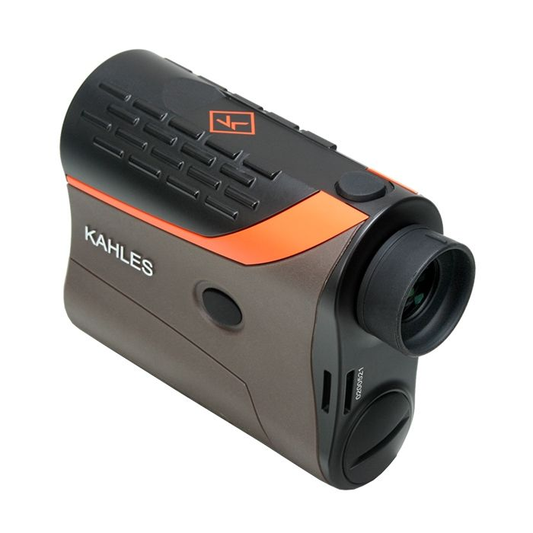

Kahles Helia Mono LRF 7x25mm 20020 delivers precise distance measurements with a range of 10 to 2000 yards, making it a valuable tool for both hunters and competitive shooters. Equipped with Enhanced Angle Compensation technology, it ensures accurate readings whether you're shooting uphill or downhill. The OLED display features adjustable brightness settings, providing clear visibility in varying light conditions and allowing for quick switches between yard and meter measurements.
This compact laser rangefinder is designed with ergonomics in mind, fitting comfortably in your hand and operable even with gloves on. At just 7.8 ounces, it’s lightweight and portable, perfect for long days in the field. Its robust construction guarantees durability while the intuitive control layout minimizes fumbling, enabling you to focus on your target. With one-yard accuracy up to 100 yards, the Kahles Helia Mono LRF is built for precision in any environment.
Key Features:
- PRECISION SHOOTING: Offers outstanding range of 10-2000 yards with varying accuracy levels, ensuring precise distance measurements.
- ADVANCED OPTICS: Features 7x magnification and a 25mm objective lens, providing a wide field of view.
- ANGLE COMPENSATION: Enhanced Angle Compensation technology for uphill and downhill shots, optimizing your aiming process.
- VERSATILE DISPLAY: Equipped with an OLED display with five brightness settings, easily switch between yard and meter readings.
- USER-FRIENDLY OPERATION: Ergonomically designed for a comfortable grip, optimized for both eyeglass and non-eyeglass wearers.
- ROBUST & LIGHTWEIGHT: Compact and sturdy design, weighing just 7.8 ounces, making it ideal for on-the-go use.
- ENVIRONMENTAL DATA: Measures temperature and air pressure to inform your shooting strategy.
- STRATEGICALLY PLACED CONTROLS: Easy-to-use buttons strategically placed for efficient operation.
Technical Specifications
| Feature | Specification |
|---|---|
| Weight | 7.8 oz |
| Warranty | 3 years |
| Magnification | 7x |
| Objective Lens Diameter | 25mm |
| Range | 10-2000 yards |
| Accuracy | 1 yard up to 100 yards |
| Display Type | OLED |
| Brightness Settings | 5 |
| Dimensions | 4.7" x 2.5" x 1.8" |
| Battery Type | Li-ion |
| Battery Life | 16+ hours |
| Control Layout | User-friendly |
What's in the Box?
- Kahles Helia Mono LRF 7x25mm 20020 Laser Rangefinder
- Durable Carrying Case
- Battery (for immediate operation)
- Cleaning Cloth
- User Manual
- Neck Strap (for easy carrying)
- Warranty Registration Card
- Quick Start Guide
Customer Reviews
“This rangefinder is incredibly accurate and easy to use. I love the angle compensation feature!”
“Lightweight and durable, it fits perfectly in my hand. A must-have for serious hunters.”
“The OLED display is clear, even in low light. I can easily switch between yards and meters.”
FAQ
How accurate is the Kahles Helia Mono LRF? The device offers one-yard accuracy up to 100 yards with incremental improvements for longer distances, making it suitable for precise shooting.
Can I use this rangefinder in different weather conditions? Yes, the rugged construction ensures it can withstand various environmental conditions, including rain and fog, allowing you to maintain performance.
How does the angle compensation feature work? The Enhanced Angle Compensation technology automatically adjusts the distance reading based on the angle of the shot, improving accuracy for uphill or downhill targets.
What makes this rangefinder user-friendly? Its ergonomic design and strategically placed controls make operation simple, even when wearing gloves, ensuring a comfortable experience in the field.
How does this model compare to others? The Kahles Helia Mono LRF stands out with its combination of lightweight design, robust features, and precise distance measurement, making it a top choice among outdoor enthusiasts.
Similar Models
Looking for other high-performance optics? Explore our extensive Kahles lineup, including models like Kahles K318i for long-range precision and Kahles Helia 1-6x24 for versatile shooting. Discover our full collection tailored to enhance your outdoor adventures.
You May Also Like
Here’s some of our most similar products people are buying. Click to discover trending style.











